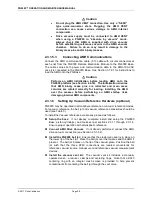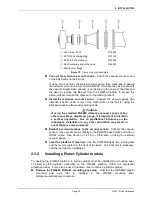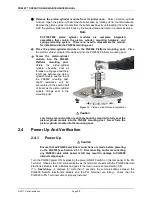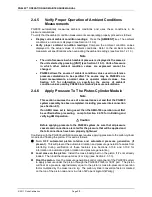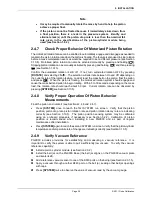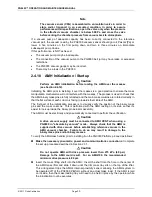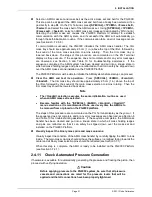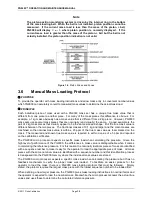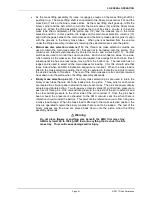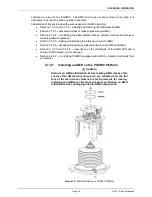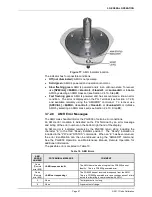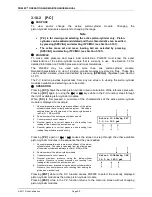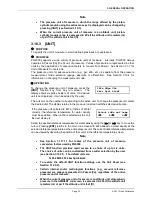
PG9602™ OPERATION AND MAINTENANCE MANUAL
© 2011 Fluke Calibration
Page
38
Note
The piston position monitoring system is driven by the internal ring in the bottom
of the mass loading bell. When the bell is not installed, piston position cannot be
measured. If the current mass load is less than the mass of the bell,
PG9000 will display < ---- > where piston position is normally displayed. If the
current mass load is greater than the mass of the bell but the bell is not
actually installed, the piston position indication is not valid.
Figure 14.
Piston Stroke and Zones
3.6
Manual Mass Loading Protocol
PURPOSE
To provide the operator with mass loading instructions and allow mass entry in convenient nominal values
which PG9000 can accurately convert to measured mass values to determine the actual mass load.
PRINCIPLE
Each individual piece of mass used with a PG9000 mass set has a unique true mass value that is
different from one piece to another piece. For many of the mass pieces this difference is obvious. For
example, a 1 kg mass obviously has a mass value that is different from a 2 kg piece. However, PG9000
mass sets use several mass pieces that are nominally (and visually) the same. A good example is the
pair of 2 kg mass pieces that visually appear to be the same size and shape. But the true mass value is
different between the two pieces. The fractional masses of 0.1 kg and larger and the main masses are
machined so the nominal mass value is within ± 20 ppm of the true mass value as laser marked on the
mass. The measured and known true mass value is reported to within a value of ± 5 ppm and reported
on the calibration certificates.
The PG9000 micro processor expects a specific mass load when calculating the pressure. Given the
high level of performance of the PG9000, the differences in mass value is distinguishable when it comes
to calculating the reference pressure. For this reason the nominally identical pieces of mass are identified
with a sequence number to make it easy for the operator to load the appropriate piece of mass. All mass
pieces with the same nominal value are identified with a sequence number and this identification process
is transposed into the PG9000 memory where the individual mass values are stored.
The PG9000 micro processor expects a specific mass load when calculating the pressure but it has no
feedback mechanism to verify the proper mass was loaded. To facilitate an easier process for the
operator to load the mass, there is a PG9000 mass loading protocol that must be followed. Simply
stated, the protocol requires the largest mass piece with the lowest sequence number to be loaded first.
When defining a new target pressure, the PG9000 gives mass loading instructions in nominal terms and
the operator is expected to load the nominal mass. Meanwhile the micro processor knows the actual true
values and uses these to determine the calculated reference pressure.
Содержание PG9000 Series
Страница 10: ...PG9602 OPERATION AND MAINTENANCE MANUAL 2011 Fluke Calibration Page X Notes...
Страница 128: ...PG9602 OPERATION AND MAINTENANCE MANUAL 2011 Fluke Calibration Page 118 Notes...
Страница 164: ...PG9602 OPERATION AND MAINTENANCE MANUAL 2011 Fluke Calibration Page 154 Notes...
Страница 188: ...PG9602 OPERATION AND MAINTENANCE MANUAL 2011 Fluke Calibration Page 178 Notes...
Страница 192: ...PG9602 OPERATION AND MAINTENANCE MANUAL 2011 Fluke Calibration Page 182 Notes...

